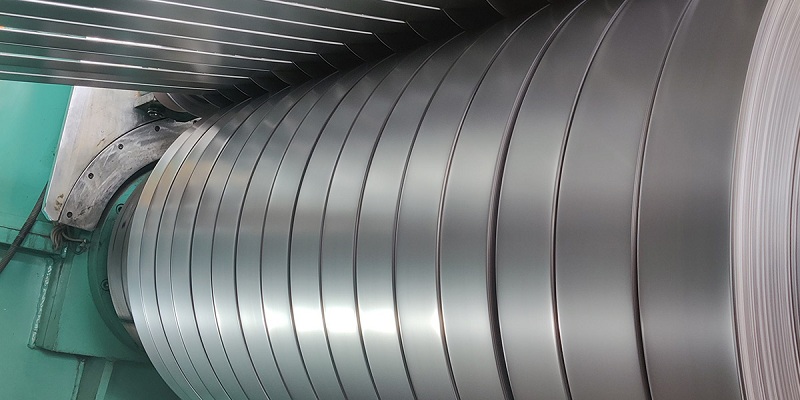
The sample was treated with isothermal normalizing, heated at 920℃ for 30 minutes, slowly cooled, and isothermal at 600℃ for 1 hour before being air-cooled. The microstructure of the sample was observed through the optical microscope, and it was obvious from the tissue that the tissue was composed of a large number of preeutectoid ferrite + flake perlite two tissues, or ferrite plus irregular island mixture (observed by scanning electron microscope, it may be martensie-austenite, carbide, bainite or their mixture). After the cold stamping comparison test, as long as the metallographic structure obtained by isothermal normalizing steel plate is ferritic + pearlite structure, there is no cracking regardless of whether the steel sheet has ribbon structure, ribbon structure direction or any Angle of stamping bending, indicating that the main factors of cold stamping cracking of 16MnR steel sheet are not directly related to the ribbon structure.
The reason for the cold stamping cracking of the steel sheet is mainly that there is a non-equilibrium structure (granular bainite, block transformation products, etc.) in the metallographic structure, rather than the previously known ferrite + pearlite structure. If the metallographic structure is ferrite + pearlite, due to the soft ferrite, it is easy to undergo plastic deformation first, and the amount of ferrite is large, the deformation part of the strengthening ends, and the undeformed part continues to undergo plastic deformation. When the deformation process is carried out to a certain extent, the pearlite will also begin to undergo deformation. The strength and plasticity of the fine sheet pearlite formed at a low temperature are good, and it is difficult to occur stress concentration and cause embrittlement, which can meet the requirements of the cold stamping process and will not produce stamping cracks. Because the chemical composition range of the steel sheet fluctuates greatly, it is easy to get different metallurgical structures locally during the cooling process of the steel sheet, and the place where the cooling rate is too fast is easy to form a partial ferrite after the excess carbon atoms are discharged, forming a local carbon-poor zone, and it is easy to form a non-equilibrium organization of bainite (such as granular bainite) during subsequent continuous cooling. Will significantly reduce the toughness of the steel, granular bainite is easy to form a stress concentration area, in the cold stamping process, when the stress reaches a certain degree, it is easy to crack.

According to the actual production situation of steel sheet, it is not difficult to see that the appearance of Bainian non-equilibrium organization is difficult to completely avoid, and the acquisition of this organization is closely related to the stacking method of steel sheet after heating, the cooling method and the operation of workers. The test results from the actual production confirmed that the use of isothermal normalizing 920℃ for 30min slow cooling, 600℃ isothermal control cooling for 1h, 16MnR steel sheet can obtain a good combination of plasticity and toughness of ferrite + pearlite structure, but the process takes a long time, not economical. Switching to normalizing 920℃ for 30min air cooling, 650℃ high temperature tempering 2h air cooling, can avoid the production of non-equilibrium Bainian structure, cold stamping performance is good. The main reason for the cracking of steel sheet in cold stamping is the appearance of Bainitic non-equilibrium structure, and the ferrite + pearlite structure is the main condition for the good cold stamping performance of the steel sheet, which can be improved by reasonable heat treatment process.
Properties and applications of electrical steel stainless steel tubes
2023-11-25Jindal Stainless turns to domestic suppliers to cut down on imported raw materials
2020-10-14Titanium: A Different Story
2025-09-25Coastal Life,Can’t without Stainless Steel Swimming Pool Fence
2020-10-28Development trend and enlightenment of electrical steel industry
2024-02-28How are metal composites "compounded" together?
2023-11-16






